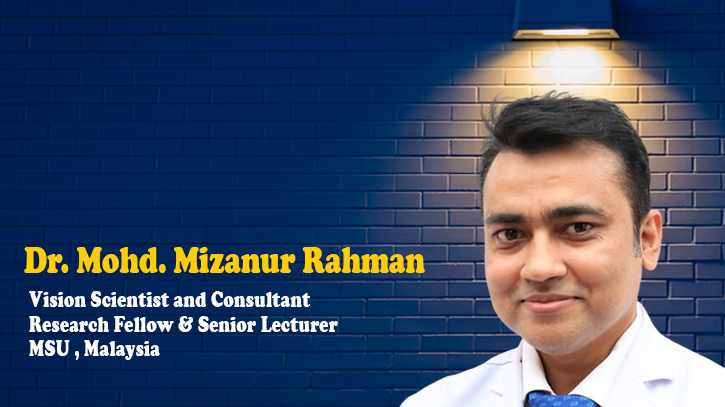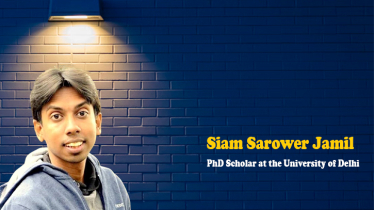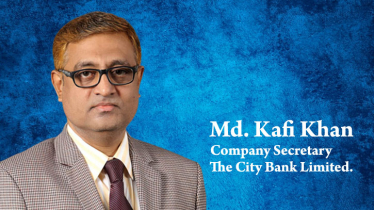
Photo : Messenger
Vision is one of our primary senses, and it plays a central role in how we perceive and interact with the world. In an era marked by technological advancements and rapid progress, one might assume that issues related to uncorrected refractive error are a thing of the past. However, the truth is that uncorrected refractive error remains a significant challenge that affects not only individuals but also society as a whole.
The impact of this condition extends far beyond mere vision problems; it can potentially jeopardize the future of the next generation's academics, activities, and sports performance.
Refractive errors, which include conditions like myopia (nearsightedness), hyperopia (farsightedness), and astigmatism, are among the most common eye problems globally. The prevalence of these conditions is on the rise, particularly in children and young adults.
According to the World Health Organization (WHO), uncorrected refractive error is the leading cause of visual impairment worldwide.
When there is a mismatch between the refractive components of the eye and the length of the eye ball - the result is an out of focus or blurred image. This is known as refractive error.
Refraction is when the eye bends light so that it can pass through the sections of your eye; the cornea, the lens, and eventually the retina. The retina is the thin, light-sensitive tissue at the back of the eye.
In order to process what we see every day, the brain needs to receive messages from the retina, sent through the optic nerve. If your retina doesn't receive light-rays correctly, it won't be able to pass messages to the optic nerve and then to the brain for interpretation.
If this happens, images can appear blurred or unclear, resulting in vision loss. Refractive errors can happen when the eyeball grows or reduces in length, when the cornea changes shape, or simply with age.
Overuse of the eye does not cause refractive error. Rather, if refractive error runs in your family, you may have more chance of developing a condition.
Some of the symptoms of uncorrected refractive error are:
Blurred or distorted vision, Headaches, squinting and eye strain, Difficulty reading, Double vision, ‘Halos’ around bright lights, and Haziness.
Uncorrected refractive error needs to be diagnosed by an eye care professional, after a comprehensive eye examination.
Uncorrected Refractive Errors are a growing concern in Bangladesh. In Bangladesh, a country with a population of over 160 million people, these vision issues are pervasive, affecting both children and adults.
The consequences of uncorrected refractive error are wide-ranging and multifaceted. For students, it can hinder their ability to excel academically. Uncorrected myopia, for example, may lead to difficulty in seeing the blackboard or reading textbooks, making it challenging to keep up with classroom activities. As a result, these students may struggle with their studies and miss out on the full educational experience.
The inability to see the chalkboard, read textbooks, or engage with educational materials puts children at a distinct disadvantage in the classroom. Teachers may inadvertently misinterpret a student's lack of participation or poor performance as a lack of interest or capability, when in reality, it may be a result of uncorrected vision problems.
Experts argue that uncorrected refractive errors not only hinder academic progress but can also contribute to a cycle of poverty by limiting future opportunities for affected children. As they struggle to keep up with their studies, these children may face increased dropout rates and reduced chances of pursuing higher education or securing skilled employment.
Beyond the classroom, uncorrected refractive errors can also impact a child's extracurricular activities and sports participation. These activities are not only crucial for physical fitness but also for personal development, teamwork, and social integration. However, children with uncorrected vision problems might miss out on these experiences due to their difficulties in engaging in physical and sports-related activities.
The burden of uncorrected refractive error does not end with childhood; it extends into adulthood, affecting one's professional and personal life. In the workplace, individuals with uncorrected refractive errors may struggle to perform optimally, reducing productivity and job opportunities.
Moreover, uncorrected vision problems can limit one's ability to drive safely, which can affect personal mobility and independence.
Addressing uncorrected refractive error is not just a matter of individual well-being; it has far-reaching societal implications. The social burden of uncorrected refractive error is a heavy one, with consequences that include reduced economic productivity, increased healthcare costs, and a diminished quality of life for affected individuals. As more and more children and young adults are diagnosed with these conditions, the problem is only set to grow in magnitude.
So, what can be done to alleviate this impending social burden? Education and awareness play a crucial role. Parents, teachers, and healthcare, eye care (Optometrist) providers should be well-informed about the signs and symptoms of refractive errors and should encourage regular eye examinations for children. Early detection and intervention are key to preventing vision problems from becoming long-term obstacles. Eye Care provider Optometrist has a very crucial role for early-stage detection and management of refractive errors.
Furthermore, access to affordable and quality eye care services, including eyeglasses and contact lenses, is essential. Governments and healthcare systems need to prioritize vision care as part of their public health initiatives. This includes ensuring that eye examinations and corrective measures are accessible to all, regardless of their socio-economic background.
In conclusion, uncorrected refractive error stands as a silent barrier to the academic success and future opportunities of Bangladesh's school-going children. It is imperative that the government, educators, and healthcare professionals collaborate to implement effective strategies, ensuring that every child has the clear vision necessary to thrive in the classroom and beyond.
Addressing this issue today will pave the way for a brighter and more prosperous future for the youth of Bangladesh. uncorrected refractive error is not a mere inconvenience; it is a future social burden that threatens the academic success, participation in activities, and sports performance of the next generation.
By addressing this issue through education, awareness, and improved access to eyecare services, we can ensure that our children have the visual acuity they need to thrive in all aspects of their lives. It is our collective responsibility to act now to safeguard the future of the next generation and prevent this growing social burden from becoming a reality.
The author is Vision Scientist and Consultant, Research Fellow and Senior Lecturer, Management and Science University, Malaysia.
Messenger/Disha








